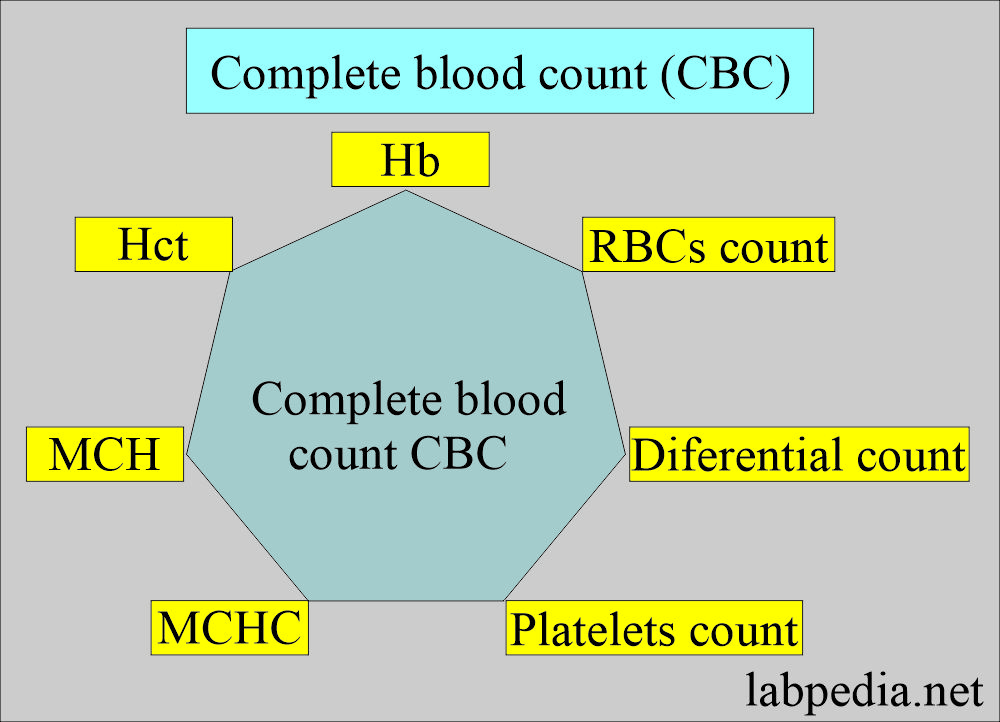Lab Tests and Their Significance, Complete Blood Count (CBC)
Lab Tests and Their Significance
Hematology lab tests
Today I would like to briefly guide you on how to use a Medical Laboratory Service. First, always use the same laboratory for tests and discuss your results with the pathologists if you have any questions. Due to the different equipment used at each lab, it’s very possible that the results might be a little different, which will most likely result in a wrong diagnosis.
Complete Blood Count (CBC) test:
-
White blood cells (Leukocytes):
- WBC fights infection.
- Increase of count in acute infections.
- Some of the drugs may decrease the count.
- It is decreased in Enteric fever.
-
Differential white Blood Cells (DLC) will give a specific pattern:
- Leucocytosis indicates acute bacterial infections.
- Lymphocytosis is seen in chronic and viral infections.
-
Hemoglobin (Hb):
- It is the main component of RBC and transports O2 and CO2; this also tells about Anaemia.
- This is part of CBC.
- It is advised to see the severity of the anemia.
- It is advised to evaluate the polycythemia.
- It is advised to see the response to the treatment of the anemia.
-
Red Blood Cells (RBC) count:
- RBCs carry oxygen from the lung to other tissues and CO2 from tissues to the lung.
- RBC count reflects the status of Anaemia.
-
Haematocrit (Hct):
- It measures the RBC mass.
- Decreased Hct is the indicator of anemia.
- Increased Hct is seen in acute and chronic blood loss and myeloproliferative disorders.
-
Mean corpuscular hemoglobin (MCH):
- It is the measure of the average weight of hemoglobin per RBC.
- It helps to diagnose the severity of the anemia.
-
Mean Corpuscular hemoglobin concentration (MCHC):
- It measures average hemoglobin concentration in the RBC.
- It is very important in treating cases of anemia because the most accurate estimation of Hb and MCH is used in its calculation.
- MCHC is decreased in iron deficiency anemia.
- Incre4ased MCHC is seen in spherocytosis.
-
Mean corpuscular volume (MCV):
- It is used to classify anemia.
- It classifies the RBC into microcytic or macrocytic anemia.
-
Platelets count:
- Platelets are non-nucleated and the smallest in size.
- Platelet activity is important for the blood clotting mechanism.
- It is done for clotting and control of bleeding disorders.
- There is thrombocytopenia in cases of bleeding disorders.
-
Red cell distribution width (RDW):
- It indicates the degree of variability and abnormal cell size.
- It is basically the automated method of measurement.
- It is advised for hematological disorders and response to therapy.

